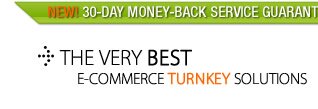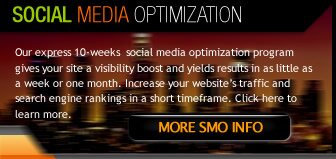| E-COMMERCE SHOPPING CART SOFTWARE • CONTENT MANAGEMENT • DESIGN & BRANDING • SEARCH ENGINE MARKETING • SOCIAL MEDIA OPTIMIZATION • FOLLOW-UP SYSTEMS • PPC | ||||||||||||||
 |
 |
 |
 |
|||||||||||
 |
 |
 |
 |
 |
 |
 |
 |
|||||||
 |
 |
|||||||||||||
|
REQUEST DEMO ACCESS
* |
||||
CAFM vs. IWMS: Facilities Management Platforms That Actually ScaleWhen you’re weighing options for managing your facilities, it’s easy to get lost between popular platforms like CAFM and IWMS. You want something that not only handles your current needs but also grows with your business. But which one actually offers the scalability you’ll need tomorrow? Understanding where each system shines—and where it falls short—can mean the difference between smooth operations and future headaches. So, what sets these platforms apart as your business expands? Understanding the Core Differences Between CAFM and IWMSCAFM (Computer-Aided Facility Management) and IWMS (Integrated Workplace Management System) are both tools designed to support the management of facilities, but they differ in their scope and functionality. CAFM primarily focuses on the daily operational aspects of facility management, including the management of data concerning space utilization, assets, and routine facility operations. It serves to streamline specific tasks and improve efficiency in managing individual components of a facility. In contrast, IWMS encompasses a broader and more integrated approach to facilities management. It combines various functions, including real estate management, maintenance, and space management, into a single cohesive platform. This integration facilitates better resource utilization and allows for more streamlined data management, thereby enhancing the decision-making process. Additionally, IWMS systems often offer advanced analytics capabilities by consolidating data from multiple sources, which can provide insights that may not be readily available through traditional CAFM solutions. The differences between the two systems imply that organizations with diverse facility management needs may benefit more from an IWMS, while those requiring more focused, operational support might find CAFM to be sufficient. Ultimately, the choice between the two should be based on an organization's specific requirements and objectives in facility management. Comparing Key Features and FunctionalityBuilding on the fundamental distinctions between Computer-Aided Facility Management (CAFM) and Integrated Workplace Management Systems (IWMS), it's evident that their respective features significantly influence how organizations manage their facilities. CAFM provides essential functionalities such as space management, data migration, and asset tracking, which are critical for enhancing operational efficiency in daily facilities management tasks. On the other hand, IWMS offers a more comprehensive solution by integrating real estate management, maintenance, and sustainability efforts into a single platform. IWMS is equipped with reporting and analytics tools that facilitate informed decision-making, while its workflow automation features contribute to improved productivity. Additionally, the scalability of IWMS allows it to adjust according to the evolving needs of a business, which can aid in achieving strategic objectives and reducing redundancy in software solutions. Evaluating Suitability for Different Business SizesWhen evaluating the appropriate facilities management platform for your organization, considerations should include your current size and future growth objectives. Computer-Aided Facility Management (CAFM) software is generally suitable for smaller businesses that require fundamental administrative capabilities. It offers limited features that can efficiently manage basic operations. In contrast, Integrated Workplace Management System (IWMS) software is designed to provide a broader range of tailored functionalities and greater scalability, making it appropriate for organizations of varying sizes, including larger enterprises. IWMS solutions often encompass comprehensive resource management and can be cost-effective as they adapt to changing needs over time. Transitioning from CAFM to IWMS can be a straightforward process that facilitates future expansion and improves operational efficiency. Many IWMS platforms integrate standard CAFM features into a single system, thereby allowing organizations to streamline processes without reliance on multiple disparate tools. It is essential to choose a solution that effectively scales with your organization. This will ensure that your operational framework can support future growth and changes in business requirements. Weighing the Benefits and Drawbacks of Each SystemWhen selecting a facilities management platform, it's essential to carefully evaluate the distinct benefits and drawbacks of each system to find the best fit for your organization. Computer-Aided Facilities Management (CAFM) software solutions can offer significant cost savings in administrative tasks such as space and asset management. However, it's important to note that these solutions may have limitations in terms of scalability and operational oversight. In contrast, Integrated Workplace Management Systems (IWMS) provide a more comprehensive framework by integrating various facilities management tools. This is particularly advantageous for organizations with complex operations and long-term resource management needs. While transitioning to an IWMS can offer greater adaptability and enhanced analytics capabilities, it typically involves a higher upfront investment. Ultimately, the decision should align with your organization's current requirements as well as its future growth plans. Analyzing the specific needs of your facilities management will assist in determining the most appropriate solution. Steps to Choose the Right Facility Management PlatformWhen considering an upgrade to your facilities management platform, it's important to conduct a comprehensive assessment of your organization's specific requirements. Start by clearly defining your objectives, such as whether your focus is on space optimization, maintenance efficiencies, or cost control. Evaluate the suitability of either Computer-Aided Facilities Management (CAFM) or Integrated Workplace Management Systems (IWMS) in relation to your organizational needs, taking into account factors such as budget constraints and long-term scalability. It is also essential to determine any integration requirements to ensure a seamless flow of data with existing systems, such as Computer-Aided Design (CAD) and asset management platforms. Engaging with stakeholders from all departments can provide valuable insights into essential features that should be included in the selected platform. Additionally, prioritize solutions that offer the potential for future growth, as this will ensure that the chosen platform can adapt to evolving requirements. Ultimately, the aim should be to select a solution that aligns with your strategic objectives, facilitates integration with current systems, and possesses the capacity to scale in accordance with your organization’s expanding needs. ConclusionWhen choosing between CAFM and IWMS, think about your business’s current size and future needs. CAFM is great if you’re after simplicity and managing daily tasks, but if you're planning for growth and need integrated solutions, IWMS offers the scalability and data depth you’ll require. Ultimately, it’s about aligning your facility management platform with your goals, so you can streamline operations and stay ready for whatever comes next. Choose what sets you up for success. |
 |
|||